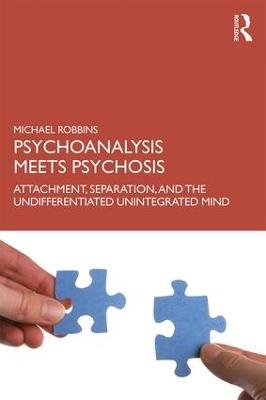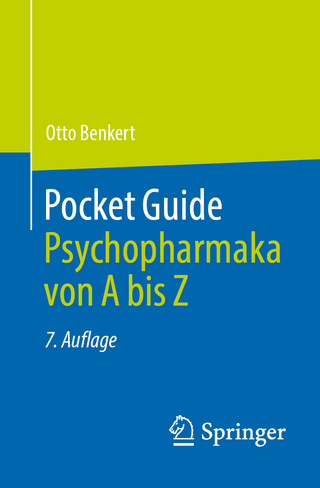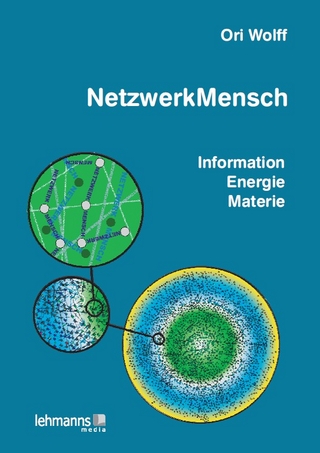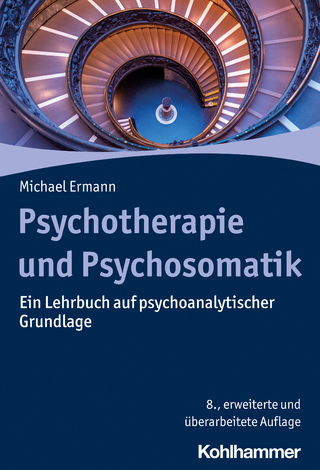
Psychoanalysis Meets Psychosis
Routledge (Verlag)
978-0-367-19117-7 (ISBN)
In Part I Robbins describes how the medical model of psychosis underlies the current approach of both psychiatry and psychoanalysis, despite the fact that neuroscience has failed to confirm the model’s basic organic assumption. In Part II Robbins examines two of Freud’s models of psychosis that are based on the assumption of a constitutional inability to develop a normal or neurotic mind. The theories of succeeding generations of analysts have for the most part reiterated the biases of Freud’s two models, so that psychoanalysis considers the psychoses beyond its scope. In Part III Robbins proposes that the psychoses are the result of disturbances in the attachment-separation phase of development, leading to maladaptive persistence of a primordial form of mental activity related to Freud’s primary process. Finally, in Part IV Robbins describes a psychoanalytic approach to treatment based on his model. The book is richly illustrated with material from Robbins’ clinical practice.
Psychoanalysis Meets Psychosis has the potential to undo centuries of alienation between society and psychotic persons. The book offers an understanding of severe mental illness that will be novel and inspiring not only to psychoanalysts but to all mental health professionals.
Michael Robbins is former Professor of Clinical Psychiatry at Harvard Medical School, USA. He is a member of the American and International Psychoanalytic Associations. His previous books include Experiences of Schizophrenia (1993), Conceiving of Personality (1996), The Primordial Mind in Health and Illness: A Cross-Cultural Perspective (2011), and Consciousness, Language and Self: A Psychoanalytic, Linguistic and Anthropological Exploration of the Dual Nature of Mind (2018).
Theorists of psychosis whose contributions are discussed in chapters 4, 5, 6, and 7
Introduction
PART I: NOT FULLY HUMAN: THE UNWITTING COLLUSION BETWEEN MEDICINE AND PSYCHOANALYSIS
1: Not fully human: Psychiatric and psychoanalytic understandings of psychosis
2: The medicalization of madness: Evolution of the equation of psychosis with degeneracy
PART II: PSYCHOANALYTIC MODELS OF PSYCHOSIS
3: Freud’s attempt to treat psychosis as though it were neurosis
Obsessive-compulsive thoughts or delusional/hallucinatory enactments?
Freud’s interpretive enactment of his theory of repressed unconscious and its results
4: Freud’s three models and their offspring i: The inability to relate
5: Freud’s three models and their offspring iia: The inability to integrate mind and become neurotic: The European Kleinian iteration
6: Freud’s three models and their offspring iib: The inability to be neurotic: the American ego psychology iteration of the integration model and Kernberg’s transatlantic rapprochement
7: Freud’s three models and their offspring iii: Thought disorder: the primary process
PART III: A NEW BEGINNING: DISTINGUISHING PSYCHOSIS FROM NEUROSISClinical preface to chapters 8, 10, & 13
Jane
Jacob
Lisabeth
Charles
8: Two conscious mental processes: The role of primordial consciousness in psychosis and other human phenomena
Misconceptions of psychosis as an adult onset disorder of genetic origin
Characteristics of reflective representational thought
Characteristics of primordial consciousness or first mind
Clinical illustrations of primordial consciousness
Dreaming and primordial consciousness
Attachment and the commencement of psychic life
9: Return to the Rat Man: Psychosis as a manifestation of primordial consciousness
10: Psychosis as a disorder of attachment and separation-individuation
Psychosis and pathology of separation: The stages of separation
Relationship between schizophrenia and psychotic personality disorder: The false self
Clinical illustrations of false self
Good enough attachment and development of the two mental processes: Rank and Bowlby
Pathology of attachment, maladaptive persistence of primordial consciousness, failure to separate, and development of psychosis Clinical illustrations of pathological attachment and failure to separate
PART IV: TREATMENT OF PSYCHOSIS
11: The medical treatment of psychosis: Transforming psychosis from a socially disruptive to a socially adaptive disease
12: Studies of the efficacy of psychological and psychoanalytic therapies of psychosis
13: Psychoanalytic therapy of psychosis: Transforming primordial conscious mentation to reflective representational thought
The therapeutic process
The remembered and reconstructed past
The process of therapy
Stages of therapy with schizophrenic persons and psychotic personalities
Criteria of successful treatment and outcome
14: Qualities of a psychoanalytic therapist of psychosis
15: Patients write about their therapy
16: The 11 year therapy of a chronic paranoid schizophrenic woman
Background
Year one
Year two
Year three
Year four
Year five
Year six
Year seven
Year eight
Year nine
Epilogue
Discussion
17: Conclusion
References
Index
| Erscheinungsdatum | 18.04.2019 |
|---|---|
| Verlagsort | London |
| Sprache | englisch |
| Maße | 156 x 234 mm |
| Gewicht | 380 g |
| Themenwelt | Geisteswissenschaften ► Psychologie ► Klinische Psychologie |
| Geisteswissenschaften ► Psychologie ► Persönlichkeitsstörungen | |
| Geisteswissenschaften ► Psychologie ► Psychoanalyse / Tiefenpsychologie | |
| Medizin / Pharmazie ► Medizinische Fachgebiete ► Psychiatrie / Psychotherapie | |
| ISBN-10 | 0-367-19117-2 / 0367191172 |
| ISBN-13 | 978-0-367-19117-7 / 9780367191177 |
| Zustand | Neuware |
| Informationen gemäß Produktsicherheitsverordnung (GPSR) | |
| Haben Sie eine Frage zum Produkt? |
aus dem Bereich


